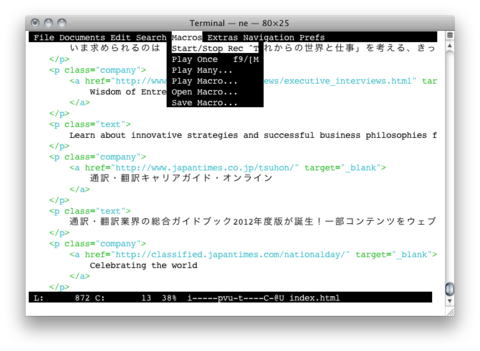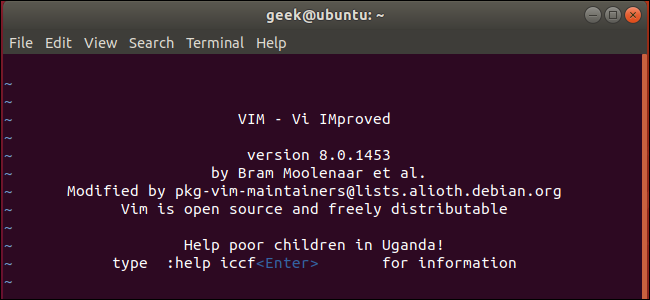

The APIUpdater will not run if you omit this command line argument when you launch Unity in batch mode. Use this command line option to specify that APIUpdater should run when Unity is launched in batch mode. This section describes the command line options available. You can run the Editor and build Unity applications with additional commands and information on startup.
#Mac command line editor manual
"C:\Program Files\Unity\Editor\Unity.exe" -batchmode -manualLicenseFile -logfileįor more details, read the Manual Activation Guide. On Windows, type the following into the Command Prompt: "C:\Program Files\Unity\Editor\Unity.exe" -batchmode -createManualActivationFile -logfile On macOS, type the following into the Terminal: /Applications/Unity/Unity.app/Contents/MacOS/Unity -batchmode -createManualActivationFile -logfile
#Mac command line editor license
Create a license activation file and import license file by command Returning the license is useful when you no longer want to use Unity on the machine, and want to use the same license on another machine. On Windows: "C:\Program Files\Unity\Editor\Unity.exe" -quit -batchmode -returnlicense On macOS, type the following into the Terminal to return the license: /Applications/Unity/Unity.app/Contents/MacOS/Unity -quit -batchmode -returnlicense

Returning the license to the license server On Windows, type the following into the Command Prompt to silently launch Unity: "C:\Program Files\Unity\Editor\Unity.exe" -batchmode -username -password XXXXXXXXXXXXX -serial E3-XXXX-XXXX-XXXX-XXXX-XXXX –quit Note: If you use continuous integration (CI) tools like Jenkins to activate via the command line, add the -nographics flag to prevent a WindowServer error. On macOS, type the following into the Terminal to silently launch Unity: /Applications/Unity/Unity.app/Contents/MacOS/Unity -quit -batchmode -serial SB-XXXX-XXXX-XXXX-XXXX-XXXX -username -password 'MyPassw0rd' Note: Use the same method to launch standalone Unity applications. When you launch Unity like this, it receives commands and information on startup, which can be very useful for test suites, automated builds and other production tasks. On Windows, type the following into the Command Prompt to launch Unity: "C:\Program Files\Unity\Editor\Unity.exe" On macOS, type the following into the Terminal to launch Unity: /Applications/Unity/Unity.app/Contents/MacOS/Unity

You can run Unity from the command line (from the macOS Terminal or the Windows Command Prompt).


 0 kommentar(er)
0 kommentar(er)
